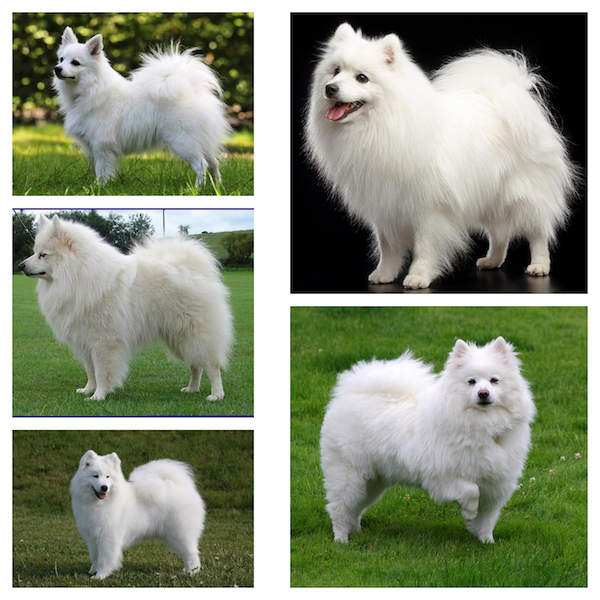
The AKC estimates that there are between 50 and 70 distinct spitz breeds, and of them, sixteen are AKC recognized. As you can see from the image, at least five of them are white and so similar as to stump the average dog owner (maybe even someone with some dog experience). Can you name them?
We’ll help. Your choices are: Samoyed, Japanese Spitz, American Eskimo Dog, German Spitz, and Italiano Volpino. Scroll down for the answers.


Because it’s a breed we haven’t discussed very much before, we’re focusing on the Japanese Spitz, a breed that some say is a direct descendant of the Samoyed. There is no documented evidence to support this other than that early, the breed was called the Samo. While the two may have a common ancestor going back centuries, the Samoyed and Japanese Spitz are very different breeds, and that leads us to the more accepting belief that a number of different spitz breed dogs sent into its development.
The origins of the breed are somewhat confusing if one checks several sources. One site writes that the very first member of the breed surfaced in Japan in 1921 through the cross-breeding of the German Spitz. Another theory holds that the first serious and sustained effort to develop the Japanese Spitz started in Japan in the 1920’s and forward to the 1950s by cynologists using an American Eskimo Dog and a Laika imported to Japan through Manchuria. Others insist that a white Russian Spitz, German Spitz, and perhaps the Keeshond were also added to the mix. Yet another author writes that pedigree records and documents kept by the Nippon Spitz Association support that idea that the Japanese Spitz was the offspring of early white Spitz dogs onboard a rescue cargo-ship from Canada following an earthquake in Tokyo in 1923.
Meanwhile, the AKC states that the full history of the breed is unknown because records were destroyed in WWII, but adds that the Japanese Spitz was known to have been first exhibited in 1921 at a Tokyo show. They add that in 1925, two white spitz dogs were imported from Canada, and perhaps this pair is the same pair that was on the cargo ship from Canada?
More certain is that the Japanese Kennel Club recognized the breed in 1947 and adopted the Breed Standard in 1953. The breed is recognized by the Canadian Kennel Club, the FCI, and in the United States, by the United Kennel Club. It’s also part of the Foundation Stock Service in the AKC. In future posts, we’ll discuss the breed’s character and conformation.
